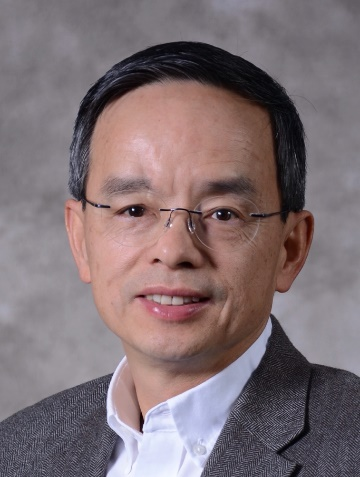报告题目:叠熵 (Zentropy)
报告人:Zi-Kui Liu教授
主持人(邀请人):王珵
报告时间:12/05/2022(星期一), 10:30AM-11:30AM。
会议Zoom Meeting:https://psu.zoom.us/my/zikuiliu
主办单位:汽车材料教育部重点实验室,be365体育平台
报告摘要:
An emergent property appears when a number of simple entities interact in an environment to form more complex behaviors collectively that any single entity does not exhibit. Emergent properties are hard to predict because the number of interactions between a system's components increases exponentially with the number of components. In principle, the elegant Schrödinger equation in quantum mechanics could address the multibody interactions, resulting in the standard statistical mechanics where the individual entities are pure quantum states with zero entropy and their partition functions related to their internal energies. The applications of the Schrödinger equation to complex systems are made possible by the density functional theory (DFT) that postulates the existence of a unique electron density for the ground state of a system at 0 K. Using the ground- and non-ground-state configurations as the building entities of complex systems, the entropy of a complex system is composed of the weighted sum of entropies of its building entities plus the classical statistical entropy among the entities. This theory, termed as Zentropy theory, stacks up the entropic contributions from electrons to the scale of complex system of interest and result in the partition functions of building entities related to their free energies instead of their internal energies. With the properties of ground- and non-ground-state configurations obtained from DFT, the emergent properties can be predicted as shown in some magnetic and ferroelectric systems, previously thought to be explainable exclusively by strongly correlated physics, can be predicted, including singularity at critical points. (https://doi.org/10.1080/21663831.2022.2054668).
报告人简介:
Z i-Kui Liu is the Dorothy Pate Enright Professor of Materials Science and Engineering at The Pennsylvania State University. He obtained his BS from Central South University (China), MS from University of Science and Technology Beijing (China), PhD from Royal Institute of Technology (KTH, Sweden).
i-Kui Liu is the Dorothy Pate Enright Professor of Materials Science and Engineering at The Pennsylvania State University. He obtained his BS from Central South University (China), MS from University of Science and Technology Beijing (China), PhD from Royal Institute of Technology (KTH, Sweden).
He was a research associate at University of Wisconsin-Madison and a senior research scientist at Questek Innovation, LLC. He has been at the Pennsylvania State University since 1999, and his current research activities are centered on first-principles calculations, machine learning, prediction and modeling of thermodynamic, kinetic and mechanical properties, and their integration for understanding defects, phase stability, and phase transformations, and designing materials processing and properties. Dr. Liu has been the Editor-in-Chief of CALPHAD journal since 2001, and the President of CALPHAD, Inc. since 2013. He is Fellow of ASM International and TMS and served as the President of ASM International and a member of ASM Board of Trustees and the TMS Board of Directors. Dr. Liu coined the term “Materials Genome®” in 2002.